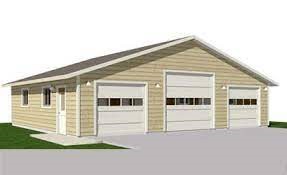NEC Section 210.11(C)(4) | Required Branch Circuits in a Dwelling Unit Garage

By: Robert Key | Jul 25, 2022
The National Electrical Code (NEC) must change with the times, and the advent of electric and plug-in hybrid vehicles has necessitated numerous changes in NEC 70. For example, Article 625 was first seen in the NEC in 1996. The title changed in 2020 from Electric Vehicle Charging System to Electric Vehicle Power Transfer System, since it is now possible to use our electric vehicle to power our home via bidirectional current flow. Using our garages to charge our electric vehicles has also necessitated changes in the outlets and circuits required in a garage to accomplish that.
Historical Perspective
The 2014 NEC allowed lighting outlets in the garage to be installed on the (required) 120-volt, 15- or 20-ampere individual garage receptacle branch circuit. However, the 2017 NEC made that requirement more stringent, so that the separate 120-volt, 20-amp (not 15 amp) branch circuit was only allowed to supply garage receptacles and readily accessible receptacles located outdoors. No other receptacle outlets were allowed, not even lighting outlets. Why? A principal reason is to accommodate the increased loads on this circuit when we charge electric vehicles.
The 2020 NEC brings a significant change: it now refers us to Section 210.52(G)(1). This is the Section that dictates requirements for outlets, whereas Section 210.11 spells out the required circuits. Per Section 210.52(G)(1), the number of outlets now corresponds to the number of vehicle bays in the garage. Hence, a garage with 3 doors would require three outlets, one in each bay. There is also a maximum height limit, the required outlet must be mounted not more than 5.5 feet (or 1.7 meters) above the floor. Hence, the ceiling outlet for the garage door opener would not qualify as one of the required outlets. The circuit is still allowed to supply readily accessible outdoor outlets.

It should also be noted that multifamily detached garages are exempt from this requirement. In a multifamily dwelling with a separate detached garage structure, each dwelling unit is provided with a garage space, but the space is not attached to the dwelling unit, therefore a receptacle outlet is not required in each of the detached garage spaces.
Today
The Code section currently reads:
2020 NEC, Section 210.11(C)(4) Garage Branch Circuits
In addition to the number of branch circuits required by other parts of this section, at least one 120-volt, 20-ampere branch circuit shall be installed to supply receptacle outlets required by 210.52(G)(1) for attached garages and in detached garages with electric power. This circuit shall have no other outlets.
Exception: This circuit shall be permitted to supply readily accessible outdoor receptacle outlets.
Tomorrow
Section 210.11(C)(4) of the 2023 NEC will have some changes as well. Although it still references Section 210.52(G)(1), there are several important refinements:
- The circuit may still supply outdoor outlets, but they no longer have to be readily accessible.
- Additional branch circuits rated 15 amperes or greater shall be permitted to serve receptacle outlets other than those required by Section 210.52(G)(1).
- For a single bay garage, outlets for other equipment can be supplied per Section 210.23(A)(1) through (A)(6), which permits the installation of other circuits up to 50 amps; however, the ground-breaking change is the inclusion of 10-amp branch circuits, which can power lighting and bath fans and be fed by 16 or 18 AWG wire.
It has been said that nothing is constant except change, and this proves true with our guide to electrical installations, the National Electrical Code. Keeping up with the changes forces us to become lifelong learners, which is a good thing.

